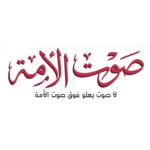|
Getting your Trinity Audio player ready...
|
Operation Protective Edge – Light at the End of Tunnel | A potential for a positive strategic change for Israelis and Palestinians
by Avi Melamed
This article is written in the midst of a fierce war between Israel and Hamas which is taking place inside the Gaza Strip as well in Israeli cities and communities.
As I write this I am fully aware of the fact that the situation is completely fluid. Any minute now something could happen that could change everything, and we may find ourselves in a totally different situation going in a completely different direction. It is very possible that the fighting will escalate. It is also possible that a cease fire will be achieved. That being said, I would like to share with you some reflections and thoughts regarding the potential ramifications of the current violent round.
I believe that this round offers both Israelis and Palestinians a potential for a positive strategic change.
The current round is very different from the previous rounds in its course, intensity, and circumstances. Due to these reasons, and other factors, the current environment, and the possible outcomes and ramifications of this round, are substantially different than in previous rounds.
In my article Mukawama, Money, Missiles (July 15, 2014), I described the circumstances and the reasons for Hamas’ decision to launch this violent round. Hamas initiated this round because they found themselves in a deepening crisis. And, as of now, it seems like Hamas’ decision has only resulted in the deepening of its crisis.
Why?
Hamas’ modus operandi is based upon three major components:
The first is creating a Fear Deterrence. The second is the ideological justification. The third is legitimacy. The current round has created substantial rifts within Hamas’ modus operandi all of which present a substantial challenge to Hamas.
I will go through and elaborate on each one.
The Fear Deterrence. The deterrence based on fear is built on two major components. One is terrorizing Israeli civilians by shooting rockets on Israeli cities and digging tunnels into Israeli territory to be used to kill and kidnap Israeli civilians and soldiers. The second component is Hamas’ assumption that given Israel’s enormous sensitivity to the loss of life – especially the lives of Israeli soldiers – Israeli governments will avoid massive military ground operations inside the Gaza Strip. Hamas’ deterrence based on fear has been broken in this round. The Israeli “Iron Dome” successfully intercepts Hamas’ rockets and the Israeli government – backed by a strong and decisive Israeli public – launched a massive ground operation fighting Hamas militants in the massively fortified strongholds that Hamas built in urban areas inside, and underneath, the Gaza Strip.
Ideological Justification. Hamas bases its activity and path on the concept known in the Arab world as “Al-Mukawamah” – “The Resistance.”
“The Resistance” ideology envisions the creation of a new political structure in the Arab world guided by the following core values: Eradicating Western influence in the region; making the Islamic religion the most dominant identity that defines Arab societies; and most importantly, the unrelenting struggle against Israel until it is eliminated.
Over the past decades the concept of “The Resistance” gained growing popularity in the Arab world. Organizations like Hamas, Islamic Jihad, Hezbollah, and others – as well as their sponsors – Assad in Syria and mostly the Iranian regime – who operate under the slogan of “The Resistance,” were praised and admired in the Arab world. The war in Syria has changed that.
The fact that the admired symbols of “The Resistance” – Hezbollah, Assad, and the Iranian regime are responsible for the killing of more than 170,000 Syrians – of whom fifty percent are civilians – caused many people in the Arab world to view “The Resistance” totally differently.
Many Arab thinkers, public opinion shapers and journalists now view “The Resistance” as a deception, a trap that the Arab world fell into misled cynically by the Iranian regime.
As a result, the glory of “The Resistance” is now stained. The admiration for Assad, Nasrallah and other figures identified with “The Resistance” was replaced with hatred. Hamas, an important member of that axis, also found itself under growing pressure and criticism. The Arab world cannot forget the fact Hamas was a member in the Shiite coalition that is responsible for ruining Syria and killing Syrian Sunnis, as well as Palestinians. Nor does the Arab world forget the fact that Hamas – in the name of “The Resistance” – took over the Gaza Strip in a violent coup (June 2007) killing his Palestinian brothers. And, finally, the Arab world does not forget the fact that under the rule of Hamas, the life of almost 2,000,000 Palestinians in the Gaza Strip became an ongoing story of misery. As far as the Arab world is concerned, the slogan of “The Resistance” has proven disastrous; it ends time and time again with more violence, more destruction, and more misery of Arab societies – and leads nowhere. The current round strengthens that sentiment which results in the weakening of Hamas’ ideological justification.
Legitimacy. In the battle for international public opinion and support an interesting phenomenon happened in previous rounds. Though formally defined by major Western states as a terror organization, Hamas was able to gain the sympathy of major circles in the West like the media, academics, third-sector organizations, etc. For different reasons Hamas successfully convinced theses circles to view the violent rounds against Israel as a “political conflict” or to “end the Israeli occupation” or to “Free Gaza.” As a result, Hamas enjoyed a somewhat “tolerant approach” towards its rocket attacks on Israeli cities (a clear act of war crimes – by the way). That “tolerance” motivated Hamas to generate more violence.
In the current round it is a totally different story. The somewhat tolerant response we saw in the past, has been replaced with a clear and decisive, intolerance. The reaction of Western diplomats and public opinion in the West regarding the shooting of rockets on Israeli cities has changed in this round. The pictures of Israeli women lying on the ground in the streets shielding their children with their own bodies because they are being attacked by rockets has caused even the harsher criticizers of Israel in the West to move uncomfortably in their seats – and it made them realize that the suffering is not only on the Palestinian side. In the battle over narratives, Israel gains points in this round. One example of that turn is the fact that Palestinian protestors accused the BBC of “ignoring the Palestinian suffering while focusing on the suffering of Israelis.” One should remember that BBC was proactively a very harsh critic of Israel during previous rounds.
The most dramatic manifestation of the shift is the formal announcement, signed by all 28 EU Foreign Ministers that: strongly condemns Hamas for the rocket attacks on Israeli cities; accuses Hamas of using the civilians in the Gaza Strip as human shields; acknowledges Israel’s right to defend itself; and calls for the disarmament of Hamas and the Islamic Jihad.
Following the previous round of violence between Israel and Hamas (Operation Pillar of Defense, November 2012) I wrote an article entitled Rocket Attacks on Israeli cities must Echo in the West. In that article I wrote about the growing and escalating threat Hamas poses and I concluded the article with the following statement – “The sounds of sirens in Israeli cities must echo in the West.” It seems that the sirens finally echo in the West.
The major reason for the shift in the European position is the violence in the Arab world. An article published recently in the Economist explores the violence and the gloomy reality of the Arab world. The strengthening of Radical Islamist groups like ISIS, Al-Qaida, Salafi-Jihadi groups and others raises growing concerns in the world, and particularly in Europe. The European concern stems from the fact that hundreds of these militants are Muslim residents and citizens of European States. The concern is that these militants will return to their homeland in Europe and will become a domestic security threat. In the mind of the average person in the West, the Middle East is associated with “massively armed young Muslim men who are wearing masks killing or threatening to kill others.” In the eyes of the average Western audience, Hamas, Jihad, ISIS, Al-Qaida and other groups are all the same. That image puts Hamas in a very difficult position because it diminishes Hamas’ attempts to be recognized by the international community as a legitimate factor.
That being said, it should be clear that Hamas – as in previous rounds – will announce victory. From Hamas’ perspective, the fact that they shot thousands of rockets on Israeli cities, paralyzed air traffic to Israel, and launched attacks on Israeli civilians and military forces inside Israel is a victory. Hamas’ logic is similar to Hamas’ role model – Hezbollah – in Lebanon. After the 2006 War (known in Israel as the Second Lebanon War) Hezbollah’s leader Hassan Nasrallah announced a “divine Victory.” Once Nasrallah was confronted with the devastation and destruction caused to Lebanon during and after the war and the severe military loses Hezbollah suffered in the war, he changed his tune. He said that had he known Israel would retaliate so forcefully he would not have launched the operation to kidnap and kill the Israeli soldiers. Pushed back to the wall by critics in the Arab world who wondered what exactly Hezbollah accomplished by initiating the war, Nasrallah said “we have fought the strongest military power in the Middle East for 33 days and we are still standing on our feet.” That is the reason Hezbollah named that war as “The 33 Days War.” It is very likely that Hamas will come up with some similar title.
Whatever the victorious claims of Hezbollah were, the fact is that Israel’s strategic reality along the Lebanese border has significantly improved since the 2006 war. Since then Hezbollah has not launched any attacks on Israeli soldiers or civilians in Israel.
The current violent round between Israel and Hamas could potentially result in a better strategic reality for both Israelis and Palestinians in the Gaza Strip.
Why?
More than 3,000,000 Palestinians in the Gaza Strip and in the Palestinian territories in the West Bank are watching and experiencing the disastrous results of Hamas’ path. More and more Palestinians realize that Hamas offers them nothing and leads to a dead-end. A widening Palestinian front opposes Hamas’ way. Hamas, who wishes to be the only representative of the Palestinians, is now light years away from fulfilling that desire. Had Hamas fulfilled its aspirations, Israelis and Palestinians would bleed in endless cycles of violence.
In Hamas’ ideology, violence is not only a legitimate tool – it is an ideological value aimed to perpetuate and maintain Hamas’ rule and relevancy. In that regard, Hamas has also reached a dead-end. Western public opinion expresses no tolerance towards the attacks on civilians (including Israelis). A similar process is taking place in the Arab world which is deeply concerned with the rising violence within its own borders, and is horrified with the escalating brutality of Islamist groups who target mostly their brothers-in-faith, as well as religious and ethnic minorities. These trends in public opinion, together with the severe military blow Hamas has sustained thus far, significantly narrows Hamas’ ability to continue its violence. That is good news for both Israelis and Palestinians.
Operation “Protective Edge” coincides with an important process – an inner Palestinian discussion regarding the path, objectives and course of the Palestinians as a nation. It is a slow, winding, process – yet it is taking place. This inner Palestinian dialogue stems from the percolation of two important insights within the Palestinian public opinion and discourse. One is the understanding that the Arab world is engaged with enormous challenges, and has neither the willingness, nor the interest, nor the resources to deal with the Palestinian issue. The other is the understanding that the use of violence against Israel leads Palestinians time and time again to a dead-end. Palestinians are learning – the same way Israel learned – that the use of military power has limitations. In the case of Israel, that understanding prompted the majority of Israelis to realize that the conflict with the Palestinians should be solved through negotiations which inevitably involve concessions and compromises. Operation Protective Edge could accelerate a similar process among the Palestinians.
Operation “Protective Edge” also has the potential for positive strategic ramifications in a different arena – and that is Lebanon. Hezbollah – whose military capacities are ten times bigger than Hamas’ – is watching the events closely. The success of the Iron Dome system; the impressive Israeli military capacities manifested thus far; the strength and endurance of the Israeli home front; the decisive support of Israeli public opinion supporting a massive ground operation despite the price paid in Israeli soldiers lives; the shift in the European position manifested by the declaration of the European Union Foreign Ministers; and the growing resentment in the Arab world towards the violence conducted within its boundaries by militant groups – all of these reasons reduce Hezbollah’s motivation (which is reduced in any event due the fact they are sinking in the war in Syria) to launch another violent round against Israel.
Operation “Protective Edge” has the potential for a positive strategic turn for both Israelis and Palestinians. Once this round is over, both parties will exit into a new space – different than the one prior to the beginning of this round.
It is both sides responsibility to materialize the potential for a positive strategic change. Palestinians must enhance an inner discussion which will allow them to view the conflict not only from the perspective of being a victim, but also from a proactive perspective that stems from the understanding that it is in their ability to shape their future. That understanding is essential because it will enable Palestinians to internalize the understanding that resolving the conflict is possible only by negotiations which involve concessions and compromises.
Israel must initiate and enhance a much more generous approach towards Palestinians in the Palestinian territories in the West Bank, as well as in the Gaza Strip. Israel – together with regional and international factors – must shape and create the conditions and atmosphere that will offer the Palestinians in The Gaza Strip a future of prospect, hope and dignity.
If you want to have a better understanding of the news and what really drives the unfolding events…
Read the latest book of Avi Melamed,
INSIDE THE MIDDLE EAST | ENTERING A NEW ERA, available now >>>
Follow me on Twitter @AviMelamed; Facebook @InsideTheMiddleEast; for more Videos on YouTube https://www.youtube.com/c/AviMelamed
I can always be reached at Av*@********ed.com
































































